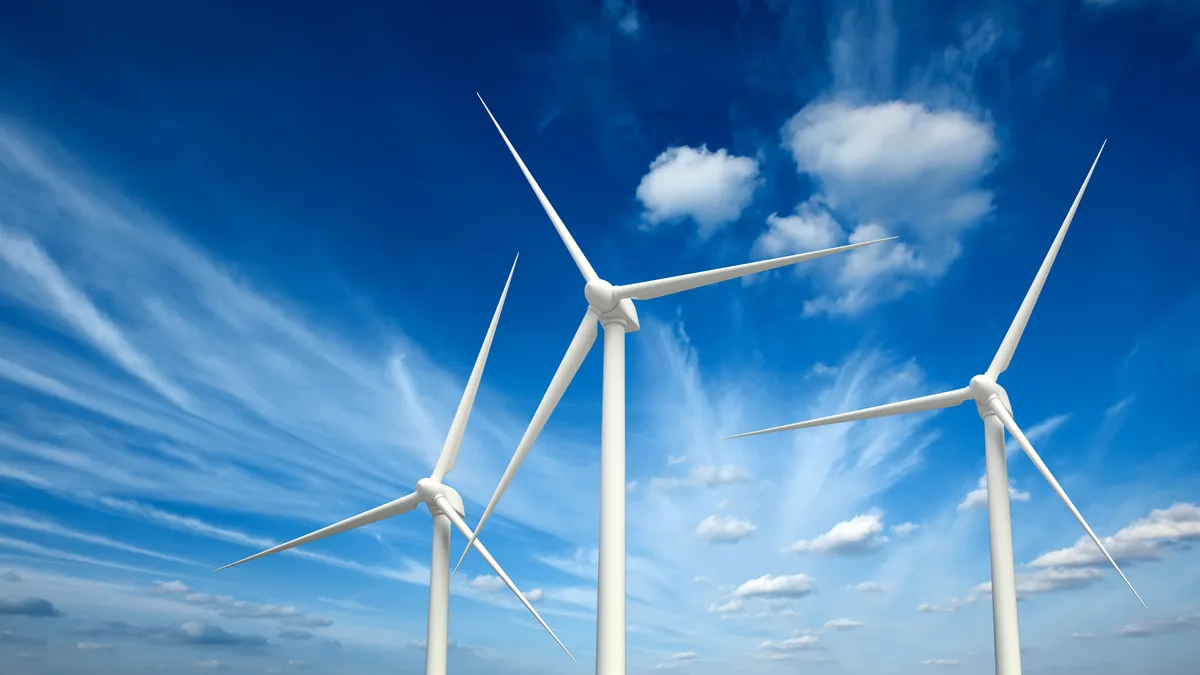Dive Brief:
- Renewable energy from wind, solar, hydropower and other sources will overtake coal to be the globe's largest source of electricity if countries meet their current pledges to combat climate change, a new International Energy Agency (IEA) independent analysis concludes.
- Even so, those current pollution commitments are not sufficient to prevent the planet’s warming by two degrees Celsius (2°C ) over preindustrial levels, the IEA scientists found.
- The report, entitled the "World Energy Outlook Special Report 2015; Energy and Climate Change," also offers a way the earth’s nations could collaborate to stop emissions from rising by 2020 and move toward stabilizing the global temperature.
Dive Insight:
No more than 2°C of warming has been the global target for climate change mitigation since the Cancun climate summit of 2010. It is expected to be the focus of the December climate conference in Paris under the U.N. Framework Convention on Climate Change. Leaders planning that event hope a new global emissions reduction agreement can be reached that can slow, and eventually reverse, global warming.
Many countries have submitted Intended Nationally Determined Contributions (INDCs) detailing their plans to limit emissions. The U.S. has pledged to reduce emissions at least 26% below 2005 levels by 2025. The European Union’s ambitious goal is to reduce emissions 40% below 1990 levels by 2030.
Those committments, IEA found, would boost renewable power from just over a fifth of global electricity consumption today to nearly a third by 2030. That would be a bigger share than coal, nuclear, or natural gas, analysts wrote, but likely would not be enough by itself to keep warming within the accepted parameters. Based on submitted INDCs and existing energy policies, there is now only a 50% chance of keeping the temperature rise below 2°C by 2040, the IEA study reports.
The importance of the Paris conference, the IEA reports, is the direction it sets. The “historic” U.S.-China climate change agreement was promising, it concludes, but the measure of the conference’s success will be the extent of its commitment to the 2°C target.
Analysis of the EPA's proposed Clean Power Plan shows that it will likely put the U.S. on a path to meet its planned emission reductions by 2025, but, as Union of Concerned Scientists Lead Economist Rachel Cleetus told Utility Dive, the planned greenhouse gas reductions are not enough in themselves to stem the tide of global warming. What's more important, she said, is that the regulations show that the world's biggest economy is serious about decarbonization, which could make all the difference in international negotiations.
"This is all about building trust, and how you build trust in this environment is, 'Show me. Don’t just say it. Show me.' And that’s what the U.S. is doing," Cleetus said. "With this Clean Power Plan they’re showing that they’re willing to take on the biggest chunk of the emissions [in the power sector]."














